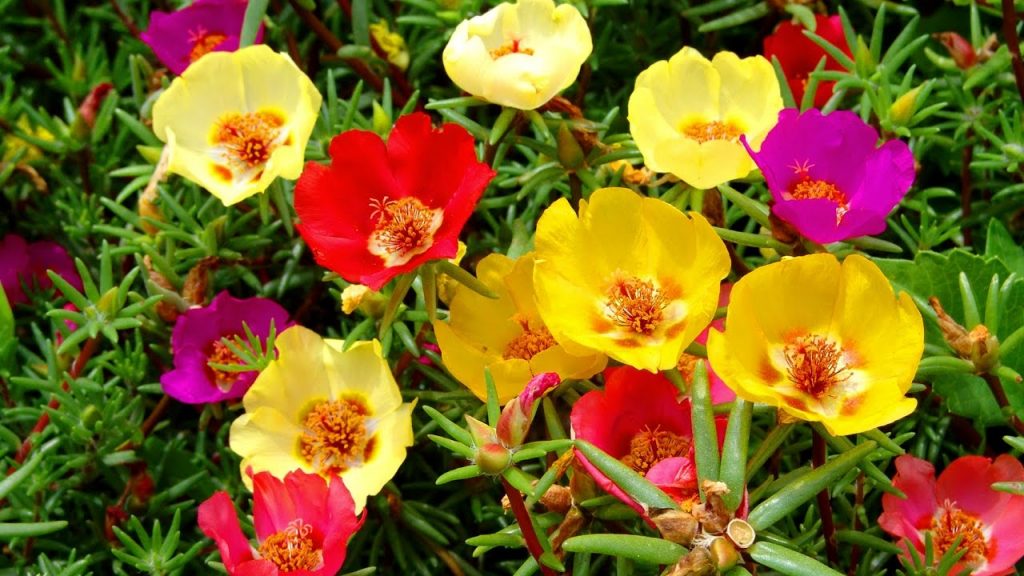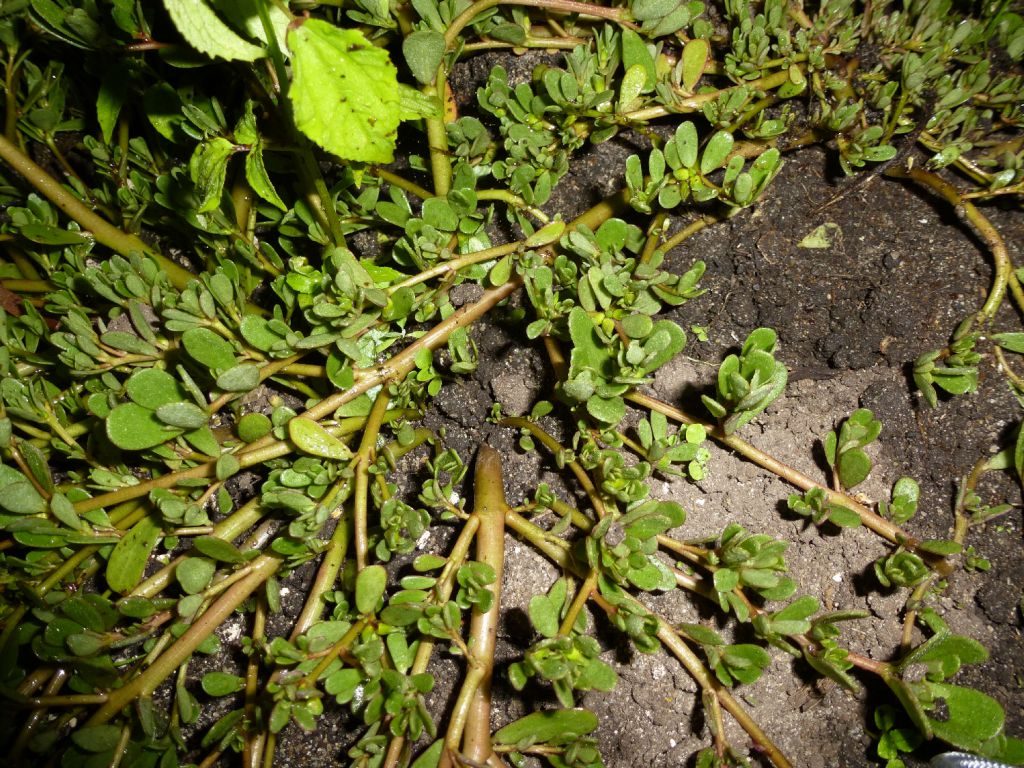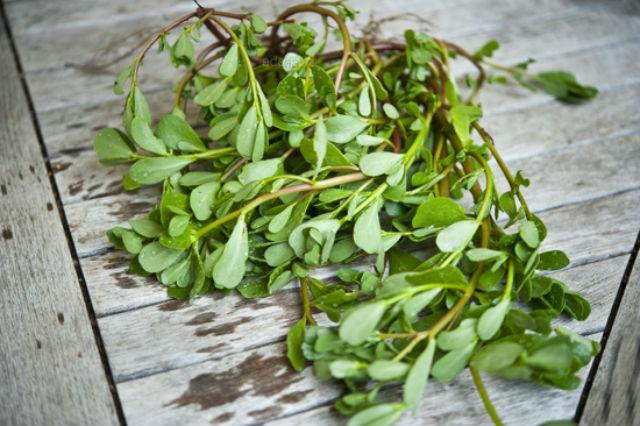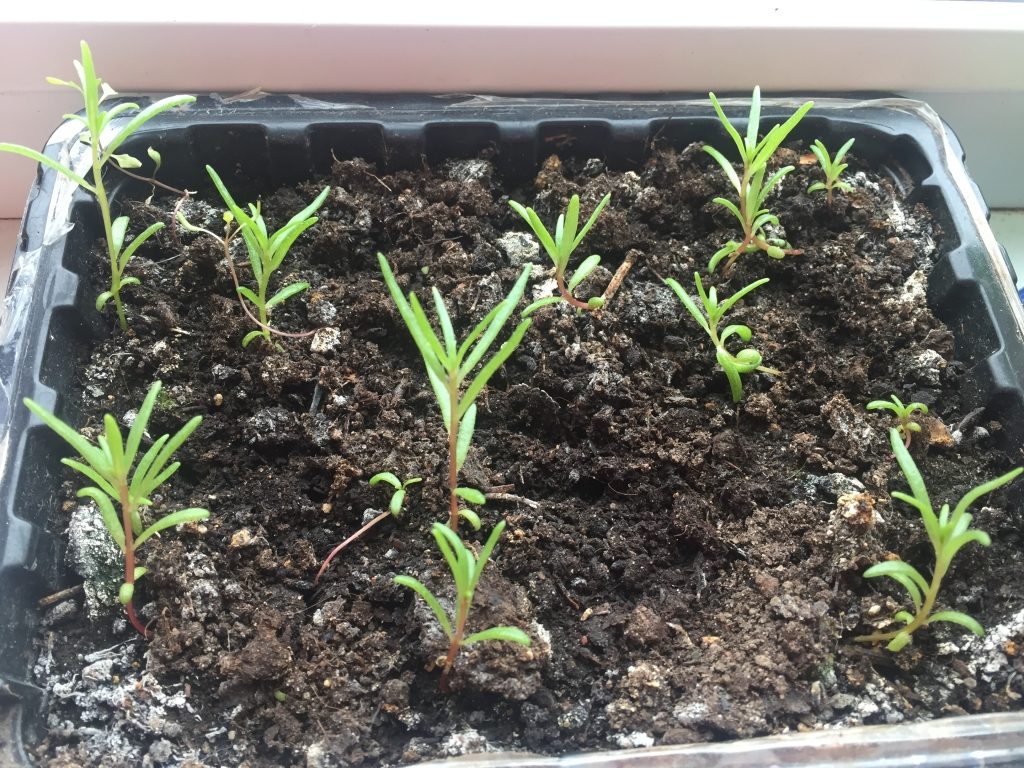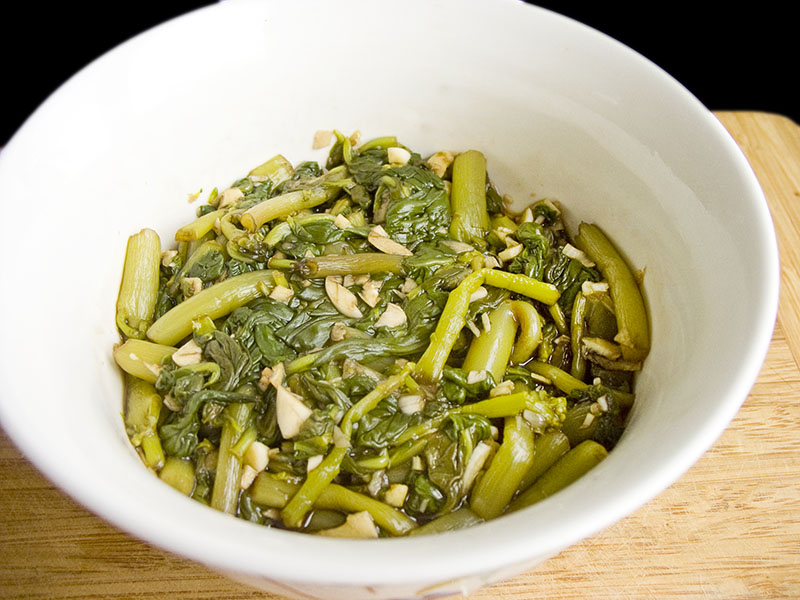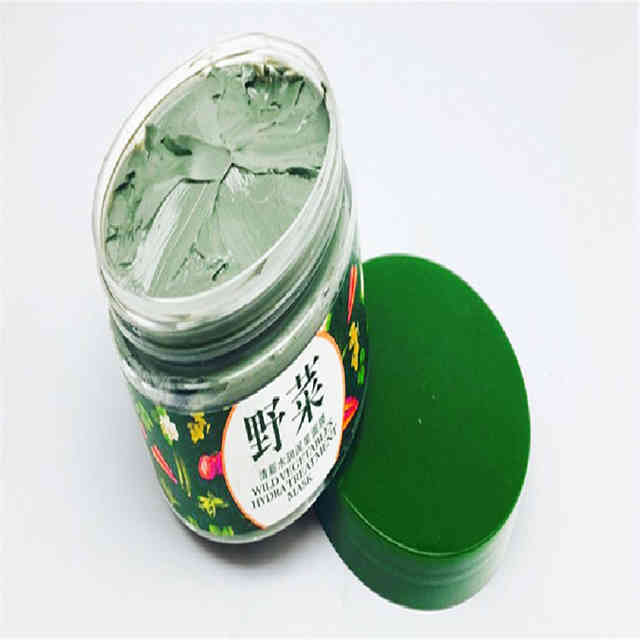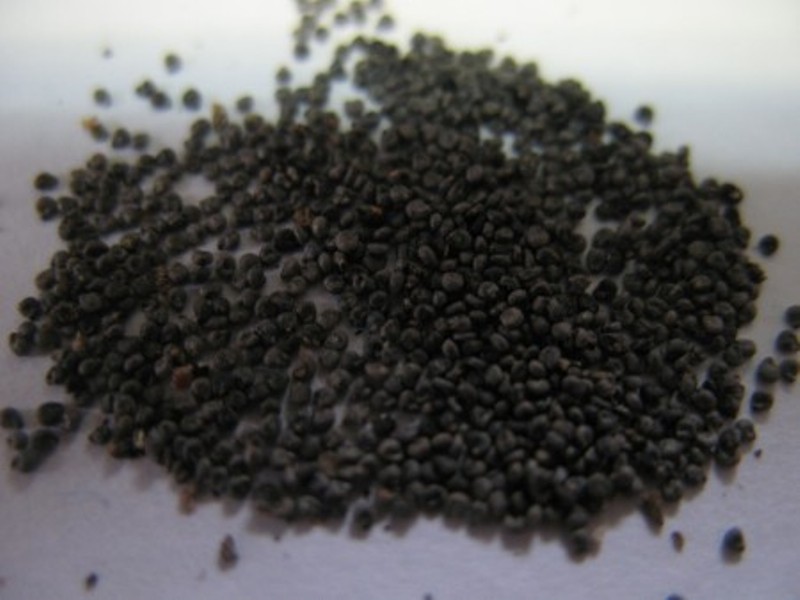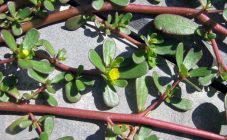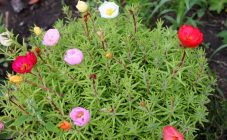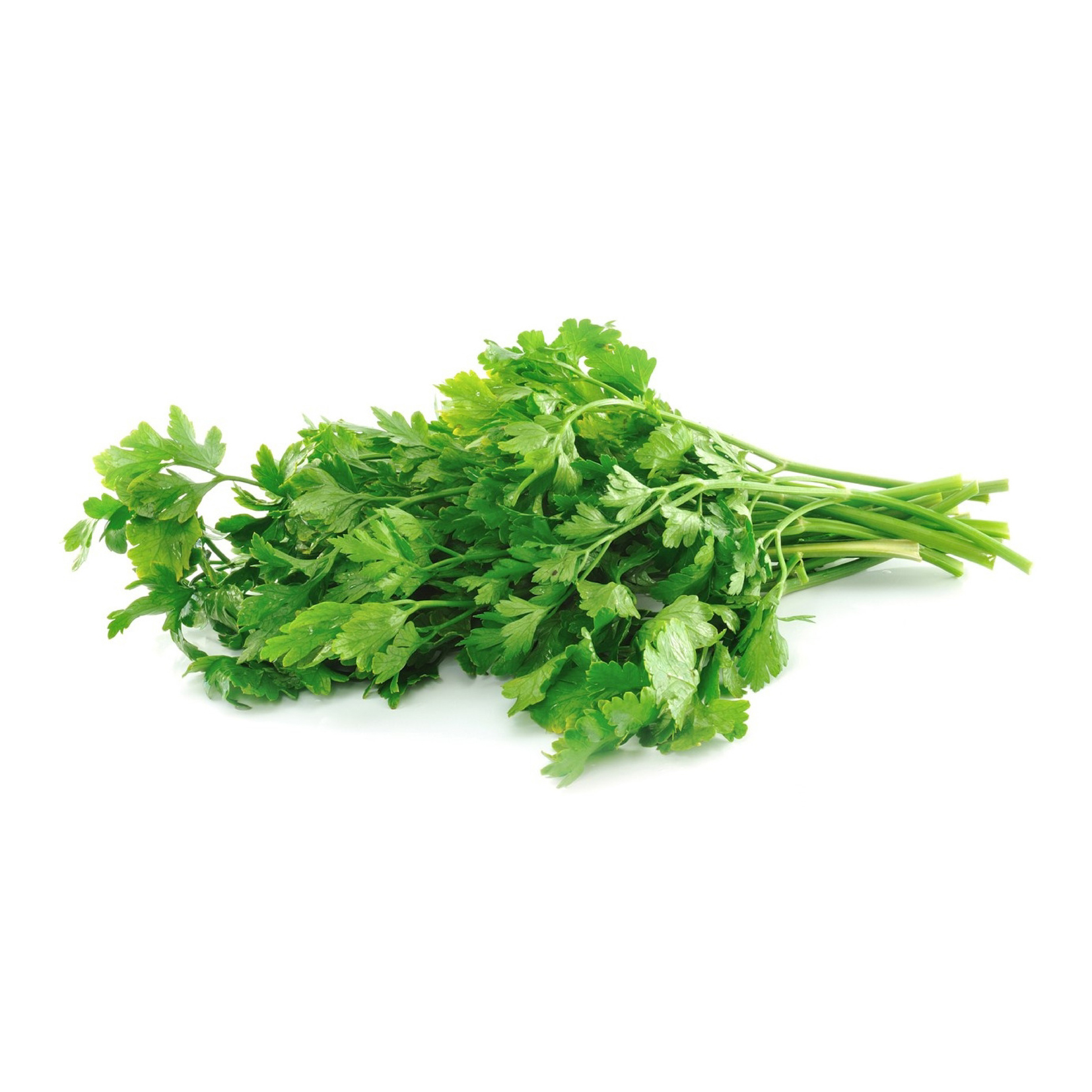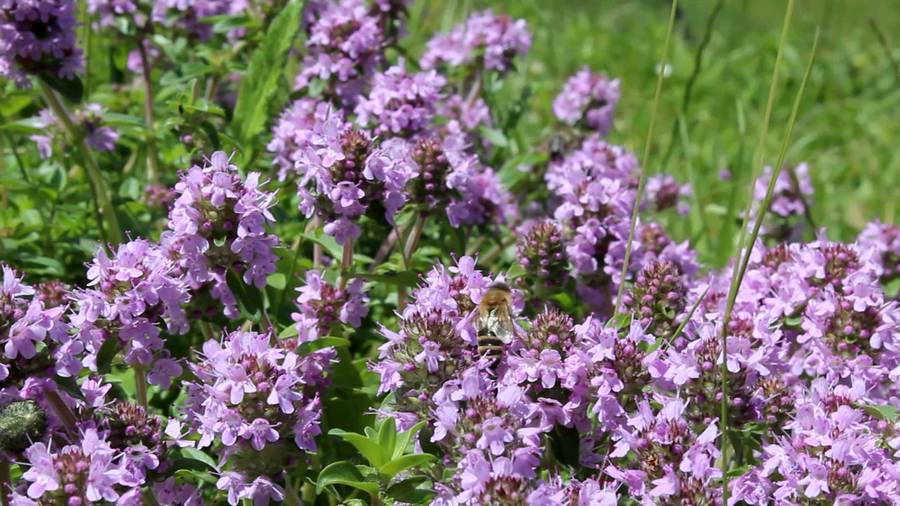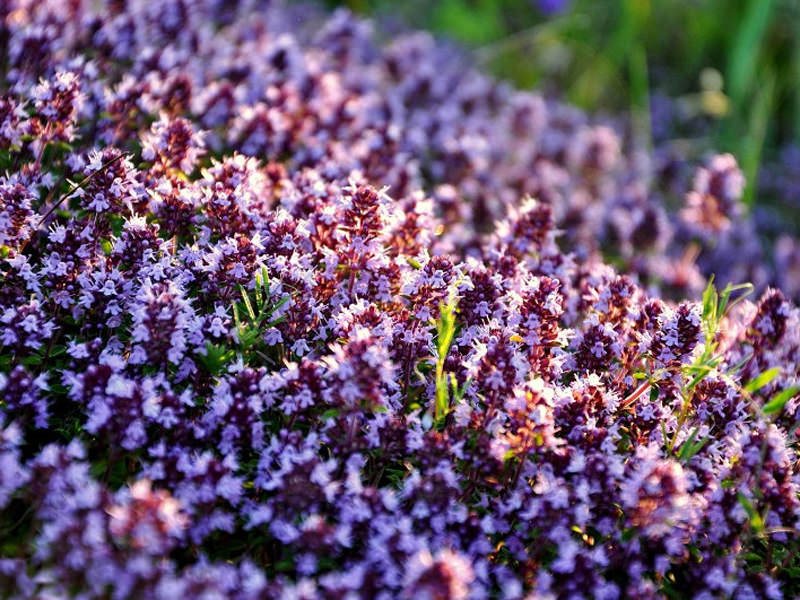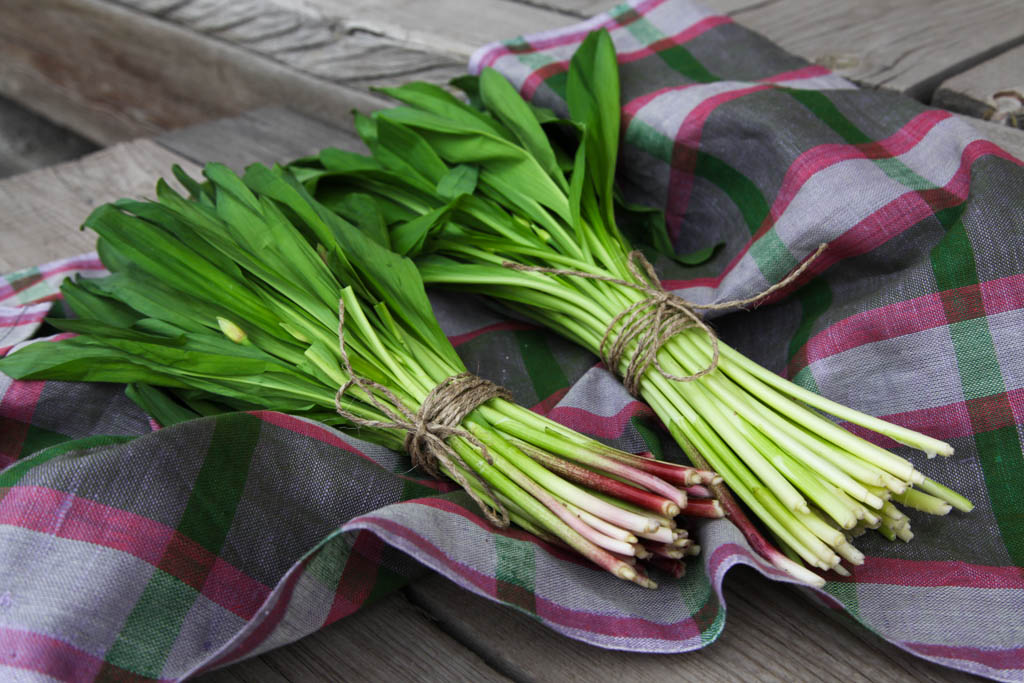Content:
You can grow a purslane plant for various purposes. Some of its varieties are used for food, others are cultivated as decorative. Some species can even be grown at home on a windowsill. Translated from Latin, the name of the purslane sounds like a "collar" because of the way the seed capsule opens. In total, this genus includes about 200 annual and perennial herbaceous plants, some of which are considered a field weed.
Description of culture
Not everyone knows what a purslane looks like and where it grows. The plant takes its origin from the tropics of the Northern Hemisphere and is perennial in its homeland. However, in mid-latitudes, it is grown for one season as it cannot withstand cold winters. In Russia, purslane was given the name "rugs", as it quickly spreads over the site, forming a continuous cover. Despite the variety of wild-growing species, only two varieties are grown in culture - large-flowered purslane and garden purslane.
Large-flowered purslane is an annual plant 30 cm high with small thickened green or reddish leaves and creeping stems. Flowers can be simple or double, of a wide variety of colors - white, pink, red, cream, yellow, orange. The advantage of the plant is its long flowering period, which lasts until the very frost, starting in June.
The flowering variety of purslane is used as a ground cover plant. They are decorated with alpine slides, slopes, rockeries, used as a border. On dry soils, a garden purslane can replace a lawn. It is also planted in hanging pots and balcony boxes. Purslane herb may look like miniature roses when it comes to terry varieties. But unlike the "queen of the garden", this plant is much easier to care for.
Garden purslane (vegetable) is called so because of its edible qualities. An annual grows up to 40 cm. You can find out what kind of a purslane plant it is by fleshy succulent leaves and small yellow flowers with a diameter of 7-8 mm. Flowering lasts all summer and covers September. Edible purslane is not picky about the quality of the soil and is able to grow in any area, so many consider it a weed. Meanwhile, the plant has medicinal properties and is useful for human consumption. Its popular varieties should be discussed in more detail.
Popular varieties of purslane garden
It is enough to plant purslane on the site once, then it will multiply by self-seeding. This should be remembered and limited to its distribution in the garden. The culture grows well even on poor soils. Sandy loam soil is ideal for purslane. He also loves open and lighted areas. The following varieties are adapted for cultivation in mid-latitudes:
- Kuzminsky Semko. The early ripe variety is recognizable by its yellowish tint on the leaves and small yellow flowers. A feature of this dandur is its heat-loving nature. The plant reacts poorly to a decrease in temperature, stopping its growth. Even small frosts can destroy it.Several cuts are carried out during the season. The bush grows up to 40 cm, the mass of one plant is 70-80 g.
- Macovei. A plant that forms a dense bush 30-35 cm high with glossy crispy leaves. Unpretentious to the soil, but it is distinguished by a love of warmth. From one square meter, you can get up to 1.5 kg of dandur. Its vegetative part is used for salads and canning. The variety has medicinal properties.
- Paradox. This fatty grass doesn't need greasy soil, but it does require a lot of heat and light. The fleshy leaves can be green or pinkish green. The variety is early ripening, the first cut can be done in 25-30 days. Culinary experts compare this dandur with spinach. Its vitamin-rich leaves are used in a wide variety of dishes. The paradox can be pickled and fermented.
- Glowworm. The variety is distinguished by fleshy stems and the same leaves. It is slightly taller than its counterparts - 45-50 cm high. To grow this variety, it is desirable that the soil is fertile and moist. The good growth of dandur is ensured by the abundance of the sun. The aerial part of the plant has a sour taste. Purslane Firefly can produce from one square meter up to 2.5 kg of green mass. It is very useful for people with liver, kidney disease and those who suffer from diabetes.
If you want to get purslane greens to the table earlier, the grass can be sown in a container for seedlings and kept on the windowsill until warm days. It is best to sow in April, then the young seedlings will definitely have enough sunlight.
Since the purslane grass in the garden grows in a solid carpet, the water does not have time to evaporate too quickly. The plant requires frequent watering only in the heat. Use for this should be warm settled water. The plant does not need fertilizing. The main thing is that there is a lot of sun and a temperature above 20 ° C - under such conditions, the dandur will certainly please with good growth.
Composition, useful properties, application
The therapeutic effect of purslane on the human body is directly related to the chemical composition of the plant. Its stems and leaves contain a significant amount of vitamins, micro- and macroelements, organic acids. The composition also contains saponins, alkaloids, norepinephrine, resinous substances.
For example, carotenoids are responsible for the synthesis of vitamin A, which has a beneficial effect on skin and vision. The large amount of ascorbic acid contained in purslane leaves helps to improve the immune system. Nicotinic acid normalizes lipid metabolism and other metabolic processes in the body. Choline prevents fatty liver hepatosis and nervous disorders, and also regulates the process of hematopoiesis.
The plant has the following effect on the body:
- anti-inflammatory;
- restoring;
- antioxidant;
- wound healing;
- hypoglycemic;
- laxative;
- antiseptic;
- anthelmintic;
- diuretic.
Purslane is actively used in cooking; in some countries it has the status of an agricultural crop. The herb is added to salads, soups, main courses. Excess greens can be pickled for the winter. The leaves have a slightly acidic and slightly pungent flavor, have a pleasant aroma and give a feeling of freshness. Its medicinal properties are used in folk medicine. The plant is also used for cosmetic procedures.
It is recommended to eat purslane for the following diseases:
- bronchial asthma;
- ulcerative colitis;
- liver and kidney disease;
- inflammation of the urogenital organs;
- helminthic invasions;
- diabetes;
- prostatitis.
The juice from the leaves and stems is used externally for bee stings, burns with poisonous plants, psoriasis, neurodermatitis, eczema, lichen, for removing warts.
Purslane cosmetic procedures are used to rejuvenate the skin and improve the condition of the hair.Due to its regenerating properties, the plant restores damaged skin cells, making it smooth and silky. The skin after such masks is smoothed. The antioxidant properties of purslane contribute to a rejuvenating effect.
Masks based on this herb are suitable for all skin types. Before use, the leaves of purslane are ground in a blender or meat grinder and mixed with other components. Additionally, the recipe can use honey, olive oil, cottage cheese, sour cream, green tea. The composition of the mask depends on the desired effect. An infusion of dry herbs helps to get rid of dandruff - it is rubbed into the scalp immediately after washing.
Pests and ways to combat them
Garden purslane is resistant to damage from pests and diseases. Sometimes in cool and humid weather, brown spots may appear on the fleshy leaves, and young shoots are bent. This is due to the proliferation of the fungus Albugo portulaceae. The affected leaves should be torn off immediately and the plants should be sprayed with any copper fungicide.
Among insects, whitefly and, occasionally, aphids can harm this grass. You can scare them off by spraying the plants with garlic or tobacco infusion. It is permissible to use industrial insecticides no later than 2 weeks before cutting.
Useful information about the plant
Dandur has been consumed for thousands of years, its medicinal properties have been known since the time of Hippocrates. With today's attitude to culture, it is difficult to say what a garden purslane is. Many recognize its undeniable benefits, but there are enough of those who consider the plant a malicious weed. Purslane seeds are very small, one gram contains more than 3000 pieces, and they retain their germination capacity for up to 10 years. Some people prefer to limit the growth of dandur on their site by planting the plant in wooden boxes.
Dandur is harvested at the time of flowering. After the plant has faded, its leaves become tough and lose some of the beneficial properties. Greens for salads do not require any pre-processing, they just need to be washed. Purslane can also be dried and ground into powder - in this case, it will act as a seasoning, which will add an additional flavor to the dish. Mostly crushed leaves are added to fish and meat dishes.
The herb can be added to food even for young children. It reduces hyperactivity in a child and relieves attention deficit. For baby food, purslane must first be scalded with boiling water, and then chopped to a puree state.
When pickling, only leaves and juicy young shoots are used. Greens are washed and doused with boiling water, and then placed in sterilized liter jars, adding half a clove of garlic there. For the marinade for 1 liter of water, add 2 teaspoons of salt and 4 leaves of lavrushka. After the marinade boils over the fire and the salt dissolves, remove it from the stove, add 4 tbsp.spoons of 9% vinegar, and then poured into jars. After 3 days, the pickled purslane leaves are ready. If long-term storage is planned, the jars with herbs are sterilized for 5-7 minutes before rolling.
Adherents of traditional medicine and natural cosmetics can recommend purslane for planting. The plant will not bring trouble during the growth process, but it will bring undoubted benefits.
